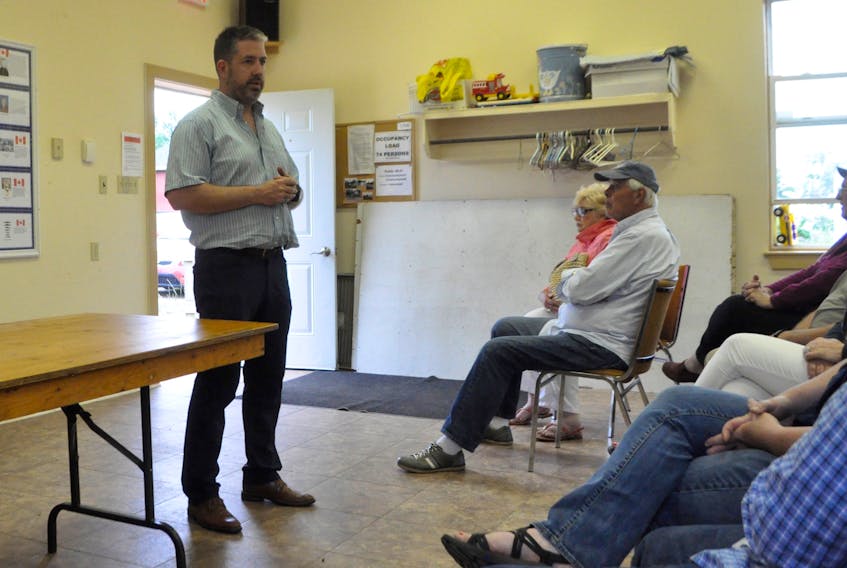SCOTT’S BAY – Consultation is the biggest reason Scott’s Bay is saying yes to a new tidal power company approaching its power plans one step at a time.
The hall full of people smiled at a meeting July 3 as they put their questions to Jamie MacLean and Joe Fitzharris of Big Moon Power Canada, the Halifax company behind the new tidal power technology that’s foregone the use of turbines.
The move is one the community has welcomed with open arms since vetoing controversial turbine designs in 2014. Ann and Joel Huntley, who are leasing some of their land to the company, say this is because Scott’s Bay has been consulted every step of the way.
“It’s not that the community has ever been opposed to tidal power development. It’s that this project seems to make sense, and people were comfortable with the scalability, and the owner has spoken with our community at length,” said Ann Huntley.

The Department of Energy announced in April it had issued two “marine renewable energy” permits to Big Moon Power for testing of their prototypes – the initial permit to begin testing a small 100-kilowatt prototype, and a second to increase the system’s size to a maximum of five-megawatts.
The company will continue testing its Kinetic Keel, a concept created by founder Lunn Blodgett, which harnesses energy with a two-part system. A land-based shed houses a drum and high modulus rope – a material seven times stronger than steel – attached to an underwater keel which ebbs and flows with the tidal current.
The rope loosens and contracts during high and low tides, meaning the two-way energy production is constantly producing energy. The system has also so far proven to have no negative impacts on the ocean environment.
The Huntleys were first approached by BMP in August 2017 and say they thought hard about this new power system.
“We put it to the community before we agreed to anything – that was important to us,” said Joel Huntley.
The couple also spoke with the fishermen, Scott’s Bay residents and Mi’kmaq community members who’d consulted with the company to check for any concerns, and found none – yet another factor they say sets this project apart from Halcyon’s 2014 turbine proposal.
“Halcyon treated our community like we were dumb, rural hicks,” said Ann Huntley, with her husband adding, “it was like they came here and told us what they were going to do without asking anyone.”

At the meeting, MacLean and Fitzharris also said they will continue consulting with all local stakeholders throughout each phase of the project, as they did with fishermen July 2 while they were on the water conducting a low tide survey.
“We’ve insisted the fishing, First Nations and academia communities are all included in each step. We think the result of that was very positive, and also demonstrated our willingness to work with and include everyone,” said MacLean.
The company started its second testing phase July 4, during which they dropped the keel’s gravity base into the water, and aims to connect the latest keel system to this in around two weeks.
This second phase also includes an upgrade to the local power grid, so it can begin harnessing energy created by the keel. BMP, which has a power-purchasing agreement in place with Nova Scotia Power, will foot the bill for the new three-phase system, meaning residents will see no change in their power costs.
MacLean said as the test phases continue and the final project is doled out within the next five years, BMP’s mindset will remain local.
“If it can be built here, if it can be employed here, if it can be spent here, it’s going to be spent here,” he said.
And the community has not only voiced its excitement for this renewable energy source, but also for other opportunities it hopes this renews as well.
“Maybe in a few years there will actually be people moving here to work, instead of going other places,” said Joel Huntley.









